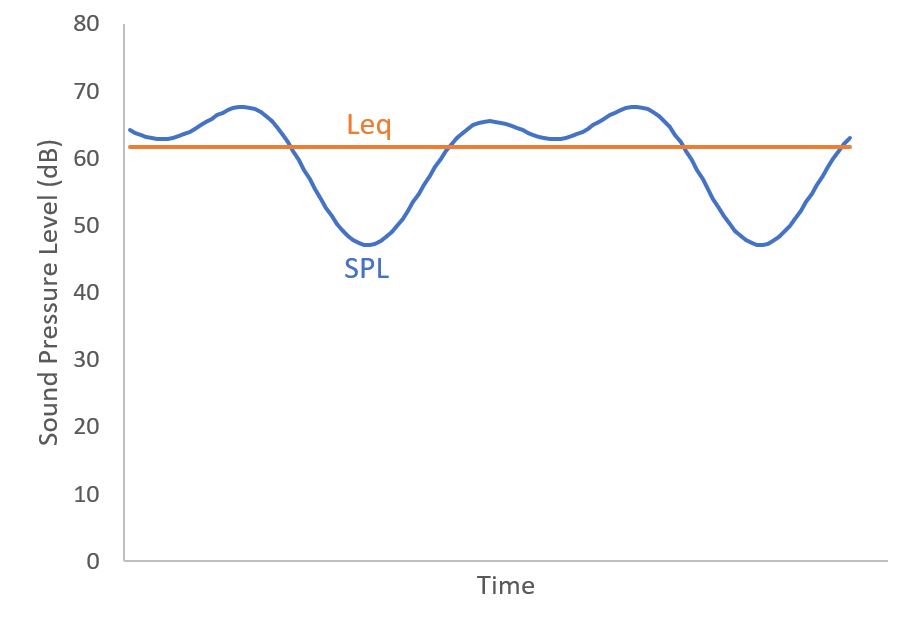
Leq (said “L E Q”) stands for Equivalent Continuous Sound Pressure Level, and is one of the most important sound level metrics. It’s nice because it boils a sound level measurement down to one decibel level number. The Leq represents the total sound energy logged over the course of a measurement.
Since the Leq corresponds with the total sound energy, it is a useful way to predict hearing damage threats as well potential noise complaints. As a result, the Leq is the basis for several noise metrics including noise dosage, sound exposure levels, and Day-Night Levels.
The Leq is the main parameter for most noise studies, and most community noise ordinances use Leq as the legal metric for controlling community noise.
Leq is different from other noise metrics like Lmin and Lmax because it does not use time-weighting. However, Leq is often frequency-weighted, with A-weighting being the most common. A-weighted Leq values are labeled LAeq with units of dBA.
Remember that because decibels are relative units on a logarithmic scale, they cannot be averaged directly. All Leq values are created by averaging the pressure measurement over a time frame and then converted into decibels. (Read more about adding decibels here.) The graph below shows the sound pressure level and the Leq over a time period.

For reference, generally 30–40 dB is about the quietest Leq you can get in a noise study, and would correspond with a quiet field at a park or a quiet room with the air conditioning and other sound sources off. Normal talking levels give an Leq of about 60 dB. Loud machinery like lawn mowers have typical Leq levels of 80–100 dB. Finally, jet engines can achieve Leq levels upwards of 120 dB.
Leq is often paired with other noise metrics like Lpeak, Lmax, and Lmin. You can read about them here.
Further Reading:
SEP
2019

About the Author: